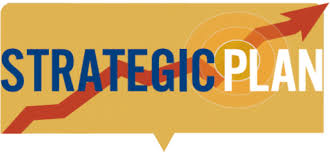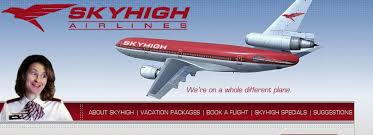
Apple Company Strategic Plan
Apple Company Strategic Plan Paper
Order Instructions:
Report Outline
1. Cover page and Table of Contents – Cover page should include: Title: Strategic Plan, Company Name, Date, Author, Course Name. Table of Contents should include a listing of all of the topics in your strategic plan.
2. Company Description – What is the state of the business today including the company background, products, services, markets serving, key technologies, key manufacturing and operations, financial strength, key partners…etc.
3. Mission and vision statements of Apple company
4. External Audit – Assess the external forces that affect the organization: economic, social, cultural, demographic, environmental, political, governmental, legal, technological and competitive. Use the tools for external audit.
5. Internal Assessment – Assess the interrelationships between departments, marketing, finance/accounting, production/operations, research & development and management information systems. Use the tools for internal assessment (SWOT, Financial ratio analysis, IFE, SWOT strategies, QSPM…..etc)
6. Establish Long Term Objectives. The objectives should provide direction for the organization, be quantifiable, address key external and internal forces and be SMART objectives which are:
Specific: The objective tells exactly what, where, and how the problem or need is to be addressed.
Measurable: The objective tells exactly how much, how many, and how well the problem/need will be resolved.
Action-oriented: The objective uses “activity indicators” to insure that something will be done. As with goal-setting, use action-oriented verbs such as deliver, implement, establish, develop, supply…etc.
Realistic: The objective is a result that can be achieved in the time allowed.
Time-bound: The objective includes a specific date for it’s achievement.
7. Evaluate and select a strategy or strategies (David, Table 5-4, page 137). Large companies commonly have multiple strategies.
8. Implementation Plan – Develop for the selected strategy or strategies
9. Conclusions and Recommendations
10. References and Appendix
Apple
Company Information http://www.apple.com/sitemap/ Retrieved (March 2013)
Investor / Financial Information http://investor.apple.com/ Retrieved (March 2013)
SAMPLE ANSWER
Table of Contents
Report Outline: Apple Company Strategic Plan. 2
Mission and vision statements of Apple Company. 5
- External Audit 6
- Internal Assessment 8
- Establish Long Term Objectives. 12
- Evaluate and select a strategy or strategies. 14
- Implementation Plan. 15
- Conclusions and Recommendations. 16
Report Outline: Apple Company Strategic Plan
Introduction
Strategic planning is the process of defining the strategies of a company and how they can be used to promote the attainment of competitive advantages (Erica, 2012). Such planning helps direct the decision making process regarding allocation of resources among other control and management mechanisms. The company in focus is Apple Company Inc. which is a renowned multinational company. In particular, strategy formation at Apple Company could involve setting goals and mobilizing resources and labor towards executing the set goals and objective. The senior management is charged with the role of strategic planning in most organizations. Strategies can be categorized into two; intended strategies and emergent activities. Formulating strategies for Apple Company takes the form of a cohesive and comprehensive analysis that entails synthesizing strategic thinking into planning activities.
1. Company Description
Apple Company is a multinational corporation based in the United States. It’s headquarter is in California. It is specialized in the development, designing, marketing and selling of consumer electronics, online services, personal computers and computer software. The company has managed to create its market niche by producing a dominant hardware which is used in the Mac product line such as iPod media players, iPad table computers and iPhone smartphones. The software used to run the Mac hardware is known as the iOS operating systems and the OS X (David, 2007). The company was founded by three principles; Steve Jobs, Ronald Wayne and Steve Wozniak in the year 1976. The company then became incorporated into Apple Computer, Inc. in 1977 and later renamed to Apple Company Inc. in 2007. The new name reflected the companies shift in focus to produce a diversified line of consumer electronics. Currently, the company ranks as the second largest in the IT industry. This rank comes after Samsung Electronics which has been ranked as the world’s largest mobile phone manufacturer.
Apple sales it products via an online store as well as its chain retail stores. Its other products are sold by direct sales force, resellers, value added resellers and third party wholesalers (David, 2007). These products include Macintosh, iPods, iPhones and other compatible hardware products such as storage devices, printers, watches, branded television sets, headphones, speakers among other computer peripherals and accessories. The online services provided by Apple Company include iTunes Store, iCloud as well as an App Store. Apple also manufacturers digital contents which are sold through iTunes Store. These services include software programs which are sold through the Apple App Store to its diverse groups of consumers. The iCloud online service has been helpful in synchronizing a wide range of data such as contacts, email, documents, calendars and photos. The iCloud also offers backup storage for iOS.
Apple has specialized in segmenting, creating market niches and penetrating market segments. The company has created a blue ocean for its products since, in spite of the high prices, the company has managed to retain its customers who range from small and mid-sized businesses, individual consumers, educational institutions, government agencies, creative customers and enterprises. Apple Company Inc. serves multinational customers through its 425 chains of retail stores which are strategically located in 14 countries. The supply chain is facilitated by other independent sellers. The latest technologies by Apple Company Inc. include the iOS 8 which has more than 4000 APIs that lets developers improve the capabilities and features of applications. The technology enables a deeper integration of iOS thus enabling extended functionality. The technology has facilitated game development. The iCloud for developer’s technology has leveraged the full power of building applications through the cloud kit framework. The developers can now securely and easily store and retrieve essential data on their applications from an online database.
Manufacturing and operations at Apple Inc. are highly innovative thus leading to the production of innovative products which move through the fast product life-cycle associated with the IT industry. The company promotes its products through spectacular promotions and marketing campaigns. The products are of high quality thus they are charged at a premium price. Apple Company Inc. has the largest market capitalization estimated at $446 billion. Because of its financial strength, the company has 75,800 full time employees globally and it enjoyed an annual revenues of $170 billion in 2013. The company is ranked in the top ten of the Fortune 500 companies. Another ranking by the Inter-brand Best Global Brand have reported that Apple is the most valuable brand in the world with a value of $118.9 billion. Apple’s key partners include social networking sites developers and programmers such as Facebook and LinkedIn. These companies have been essential in partnering with Apple in marketing its products because the company pre-install these applications in their electronic gadgets such as the iPhones. The Taiwan Semiconductor Manufacturing Company (TSMC) has been a confidential key partner for Apple Company since it shares with it important data on the A7 system on chip technology (SoC).
Over an extended period of time, Apple Inc. has appreciated that its growth and development would be equally dependent on the input of its key partners which include AT&T. This company is the closest partner to Apple since it is the sole carrier of iPhones. The partnership deal begun in 2007 it lasted till 2011 when Verizon begun competing it by selling iPhone 4s. Verizon Communications is another major business partner. It is the largest telecommunication carrier in the US and it has participated in the launch of the iPhones. The Verizon provides a CDMA network. The other partner is Foxconn Technology Group which is a leading electronic manufacturer globally. It is also the largest exporter of electronics in China. It is the company that assemblers the hardware for Apple in its plants in Taiwan and China. TPK is another vital partner as it deals in the supply of touch-panels across the world. It is the largest supplier of touch panels for the iPhones and the iPads. It is reported that approximately 75% of TPK’s revenues came from its partnership with Apple. The Quanta Computer Company is another key partner as it manufacturers the MacBook and iMac product lines for Apple. The partnership between the Taiwan based Quanta Computers and Apple dates back to 1998. Quanta is among the leading notebook manufacturers across the world as it supplies brands such as Gateway and Hewlett-Packard.
2. Mission and vision statements of Apple Company
The management at Apple Company have not set out a clear and elaborate mission and vision statement. Nonetheless, the company has shown signs that its mission statement is either dynamic or that it is embedded into the hearts of its employees and the other stakeholders. Accordingly the most suitable mission statement has to entail such rubrics associated with a strong believe that the company is focused on revolutionizing the world by offering quality products through innovation, research and development (Erica, 2012). The management has to show its commitment towards customer satisfaction by providing simple products which are not complex to the end users. Another pertinent statement to be included in the Apple mission statement would be the company’s strong believe that it has to make a contribution towards bettering humanity by carefully selecting its market segments and creating niches. This objective can enable directing resources towards products and market that offer most profits while promoting investing into projects that are meaningful to the stakeholders. For the work teams, the company believes in cross-pollination and deep collaboration that will allow the company to be creative and innovative. The groups and work teams have to be seamlessly integrated so as to help them acquire basic virtues that will propel the company into attaining the company’s vision. The vision of Apple Company can therefore be focused on continuously investing into innovations that will transform human life while making the company a center of excellence and global market leadership in the electronic and IT industries. Both the mission and vision statement will second the Apple Company Inc. slogan which states that an apple a day keeps the doctor away.
3. External Audit
An external audit of Apple Company’s Inc. can be facilitated by the use of a PESTEL analysis. This term is an abbreviation for Political, Economic, Social, Technological, Environmental and Legal factors. It describes a strategic framework which can be used by a company to analyze its macro-environmental factors by scanning the environment. This analysis will be helpful in understanding market growth factors and thus contribute towards formulating a viable research strategic plan.
Political factors determine the degree of government intervention in the growth and development of the economy. The government through its policies and regulations have impacted on decisions made by the management at Apple. For instance, since 2005, the company has expanded its market segments outside the United States thus selling most of its products outside the USA. The countries that account for most of its sales include China, Ireland, Czech Republic and Korea. The global market place is diverse with developing and developed countries. These governments impact on the sales volume of products through taxation, tariffs and quotas so as to achieve a Balance of Payment (BOP) (David, 2007). In the event that Apple disregards these international rules and those set by the US government, then it will have a hard time marketing its products.
Economic factors have impacted on the decision making process at Apple Inc. This is because global factors such as economic growth, inflation rate, exchange rates and interest rates impact how a business operates. Economic situations such as recession and bloom could impact on the sales made on Apple as a company. The products produced by Apple are mostly viewed as luxuries thus an increase inflation could result into low sales volumes. This is because of the increase in unemployment rates which will reduce disposable income thus lowering the buyer’s propensity to purchase. Economic factors can affect Apple either negatively or positively.
Social-cultural factors describe the living patterns and values of the global consumers of Apple electronic products and services. Social factors impact on customer preferences, income groups, and perception and life priorities towards purchasing Apple products. Whereas other social factors such as fashion, social class and peer pressure could drive people into purchasing Apple products, the same forces could make people value other products instead of Apple’s (David, 2007). The company has managed to associate itself with quality, reliability and innovation. The consumers are also aware that Apple Inc. is an expensive brand. Social factors are synonymous with cultural aspects such as population growth rate, age, demographics and distribution of people. These factors collectively impact the company’s positioning of its products and creation of niches.
Technological factors are determined by the ability of Apple to manufacture and design highly innovative and differentiated products through research and development. So far, Apple Inc. has managed to win over more customers because of its unique products. The IT industry is competitive based on the ability for a firm to be innovative in creating appeal through appearance and product features (David, 2007). Legal factors describe the global laws governing the manufacture of electronic products by companies such as Apple Inc. The company has benefited from laws allowing for sub-contracting of countries with cheap labor such as Korea, and China. As a result, the company has managed to create a competitive advantage due to its low costs of production. Environmental factors are determined by the geographic location of a country since it has an impact on the climatic changes and apparently, this forms the bulk of environmental influence on trade and consumption trends. These factors include the climate, weather and geographic location. This factor mostly affects farming and agri-businesses thus it does not influence much of the operations at Apple Company.
4. Internal Assessment
An internal audit for Apple Company entails the use of strategic management and planning tools such as Financial Ratios, IFE, QSPM and SWOT analysis. SWOT analysis is an abbreviation for the Strengths, Weaknesses, Opportunities and Threats. In terms of strengths, Apple Company has for a long time been associated with innovations. The history of the company dates back to a visionary leader; Steve Jobs who had an inert passion for developing new technologies. Steve jobs created this competence by introducing a research and development department which worked hand in hand with the other departments. The specific contributions of these departments include the management information systems department which was vigil in analyzing the IT trends among key rivals such as Samsung and Nokia. The second department was finances and accounts department which coordinated the allocation of resources towards research and development. The marketing department contributed towards innovation by collecting statistics on marketing trends and the consumer wants thus the research and development department used the information in connecting the product design to future customer wants. The production and operations department was upfront in designing new technologies so as to maximize on the returns by reducing cost of resources. The production unit was essential in ensuring that the new technologies adopted matched the political legal requirements set by the government.
As a result, the cutting edge innovations have been seen in the launch of the iPhone, the iPad and other devices. This has made innovation a hallmark for the company which strives to improve its previous models of phones as seen in the recently launched iPhone 6. These innovations include a wider display size, an upgrade of the iOS operating system and other hardware. They have also designed an iWatch which is a novel offering in its product line. The other innovations which will likely improve the company’s sales include the launch of the iPad Air 2, iPad Pro, new MacBook and iPad Mini 3. These innovations form part of the strategic planning process since they have contributed towards competitive advantages and increased sales which has earned Apple Company an increase in their market share (Lorenzen, 2006). The second strength is associated with the finances of the company. As it has been reported by the finance department which helps the other departments in budgeting and resource allocation, the company has had a positive cash-flow since its inception. The company currently has an asset base of $38 billion and an additional $127 billion in long term securities. Because of this financial endowment, the company can decide to use acquisition strategies so as to leverage itself against competitors. An example is the recent decision by the company to purchase Beats Electronics at a cost of $3 billion. With the purchase, the company has widened its capital returns program. Financial capabilities also mean that the company is better placed to advertise and market its products. The marketing strategy is often a collaboration between the finance department together with the sales and marketing department. For instance, during the fiscal 2013, Apple spent $1.1 billion on advertising budgets.
Apple Company has in the past experienced weaknesses such as premium pricing. The company’s products are among the priciest computing devices in the market. The marketing department targets a market niche dominated by luxurious buyers. Because of this marketing strategy, the company has failed to penetrate developing markets where companies such as Tecno and Huawei have dominated because of their low priced telecommunication gadgets. The luxury positioning of the product has also rendered Apple to price competition in developed markets such as South Korea where Samsung and China’s Xiaomi have significantly increased their market share. The second weakness is associated with the iPad product line which in spite of previous successes has lost out on its former market share. The shipment of iPads fell by 9% in the fiscal 2013. This signifies that Apple managed to sell only 13.4 million units in Europe and U.S. Most of the sales were made in the BRIC countries. The iPad has in the recent past suffered stiff competition and the growing number of manufacturers of tablets such as Google’s android powered tablets which retail at a much lower price. It is projected that the sluggishness of the market towards the iPad is likely to persist unless the company does something about its pricing strategies so as to fit into the developing countries and other oversea markets. The other strategic move towards solving this two problems is the need to partner with companies such as IBM. The two companies are reputable thus it would be prudent if their partnered towards developing more superior applications for the iPhones and iPads.
Apple could embrace strategies aimed at increasing its opportunities by growing its market share growth. Given the fact that Apple has been losing its market to Samsung due to intensive rivalry, the marketing department can still work together with the operations department to redesign their marketing strategies so as to increase the market share. Apple holds 20% of the global tablet/PC market share. On an overall scale, it ranks higher than Samsung and Lenovo. According to the projections made by the marketing department, the company is expecting a growth in its market share in 2014 especially after the launch of iPhone 6 and an increase in marketing activities in China and Pacific regions. It is further expected that the penetration of the iPhones into the BRIC geographies will contribute towards creating opportunities for the company. This is because Apple has made contracts with influential wireless carriers in the local target countries thus increasing the customer segments. Its most promising agreements was that with China mobile which is expected to increase the exposure of Apple’s products to the more that 760 million subscribers of the huge network. The second opportunity arises from the purchase of Beats Electronics. By purchasing this Beats, Apple proved that mergers and acquisitions was a strategic option into increasing a company’s competitive advantages. The deal which was completed in August 2014 opens up new opportunities for Apple Company. The acquired company will boost the iTunes product line including the radio services. The same company will also help Apple in developing its iWatch among other wearable audio devices. There is also the opportunity of talent infusion from music industry icons and managers such as Dr. Dre and Jimmy Iovine who have been the creative managers for the Beats Electronics.
Competition has been the biggest threat to Apple Company. Technology is faced passed and because of this the electronics industry as well as the IT industry are very elusive. The product cycle for these industries moves fast from the introduction, growth up to the maturity stages. This rapid growth into maturity and decline phases have intensified competition since the companies that are better positioned at making innovations have in the past used innovations to win over customers from competitors. According to the Porters generic analysis, it is also made evident that the premium pricing makes it hard for Apple to compete in some markets which are dominated by low-cost rivals as it is the case in China, India and most African countries. The second threat results from gross margin pressures stemming from intensive competition. A loss in the pricing power, rising costs of production and product shortages have also impacted on the company especially in the past years where at times demand has exceeded supply leading to shortages. According to the SWOT analysis of Apple Companyi, which presents an interplay between the various departments; operations, marketing, finance, research & development departments, development and management information systems department and their contribution towards the advancement of the internal audit at Apple Company, it is highly likely that the strengths and opportunities presented for the company far much outweigh the weaknesses and the threats. The overall results reflect on the company’s ability to grow its dividends, improve its product quality through more innovations and increase its returns and market share through aggressive marketing.
5. Establish Long Term Objectives
Just like any other company that is guided by a mission and a vision statement, Apple is looking forward to establishing formidable strategies that will see it thought turbulent financial times. The most preferable strategies begin acknowledging the fact that Apple as a company is looking towards introducing new products and services as part of its diversification plan. The introduction of these products and services triggers a thorough analysis of the pricing strategies implemented at the company. Product pricing determines the ability of a product to be accepted by the customers. For instance, the launch of the iWatch by Apple has to conform to the customers’ expectations of the prevailing market prices by competitors such as Samsung Galaxy Gear, Qualcomm Toq and Sony Smart-Watch (Boundless, 2014). The Moto 360 smart watch stands out as the most dominant rival for the iWatch. When considering the pricing for the smart-watches, Apple has to consider cost based pricing which is computed using the formulae;
Cost + Fixed profit percentage = Selling price.
Alternatively, the company could decide on using competition based pricing, value-based pricing, or demand based pricing. Given the intensity of competition in the smart watch market, it is financially feasible for Apple to use the competition based pricing but in the event that the company wants to use value based pricing, then it has to consider such factors as the uniqueness of their products and the product features embedded into their hardware system. The software also has to be reliable and seamlessly inter-operable with other iOS 8 devices on the market. Given the fact that the product is at the introduction product life cycle, then its prices have to be low so as to attract customers after which the prices can be adjusted as the product moves to the growth stage and into maturity. According to marketing analysts, when a company is launching new products, it has to consider the best way to capture the market. In order to attract the customers, Apple will have to implement a pricing structure that is transparent in future so as to compete effectively rather than using the current premium pricing strategies.
The second futuristic objective for Apple Company is tied to its need for continuous growth. The IT industry is at its growth life cycle since it is coupled with extensive research, development and innovations. This means that the long term objectives for Apple Company have to promote growth in what is known as a growth strategy. The growth strategy includes improving on the current products while making plans to introduce new products and services for the diverse market segments. Cell phone and computer manufacturing companies are aware of their continuous need to improve on their technologies and this should be the trend at iPhone. It is highly suggested that unlike the current trend where Apple only develops one or two brands of electronics such as the iPhone 6 and iPhone 6 plus launched in 2014, the company could start manufacturing products for the different market segments. This will ensure that the company keeps abreast with the demands posed by the customers. Apple could also venture into upcoming smartphone and computer/PC markets in Africa and Asia such as India so as to explore the market and identify the products that could perform well in such markets. So far it is acknowledged that Apple has managed to implement the product differentiation strategy and it has been a key factor in creating a blue ocean for its products. This is because of the uniqueness in the products coupled with the innovations in hardware and software. This has made the products unique and superior to its competitors. The accessibility of the company’s services has been facilitated by its multiple chain stores strategically located in 14 overseas countries.
6. Evaluate and select a strategy or strategies
The selected strategy that is mostly used by global organizations is the acquisition strategy. Acquisition is defined as the corporate action of buying another company by a more dominant and established company. The process of acquisition mostly begins with the identification of a target company where the parent firm begins by acquiring partial ownership that will enable it to influence policies and decisions. An increase in stake to a percentage exceeding 50 will give the firm control over the target company. This strategy has been found suitable where a company intends to take over an existing company together with its market niche. It is often beneficial where a company weights the cost of expanding on its own as being a more expensive and uncertain strategy than acquiring an already existing business. There are two types of acquisitions and this can either be hostile or friendly. Friendly takeovers occur when a firm expresses and enters into an agreement making it possible for it to be acquired while a hostile acquisition happens when the acquiring firm forcefully takeover the ownership of a target firm by purchasing more than 50% of its stocks and shares. The process of acquisition is often accompanies by a strategic logic which includes the need to expand operations or the market. This strategy could also be driven by the need to eliminate competition especially in duopolistic industries dominated by two firms. All in all, the strategy is aimed at a general goal of value creation. According to an empirical research by David, (2007 backing this strategy, it is observed that companies could decide to acquire another company so as to achieve the following archetypes. First, the acquiring companies have the intent of improving their performance, second, they could be focused on minimizing competition, third, the acquiring company might want to expand on its market by merging its current customer base with the niches created by the target company and fourth, acquisition has the benefit of helping a company to acquire technologies and skills that could have been more expensive to create.
Examples of multinational companies that have been successful using the acquisition strategy include IBM which pursued the strategy by purchasing software firms. This was between the years 2002 and 2009 where it acquired 70 software companies at a cost of $14 billion. The company had made a previous estimation that the acquisitions would bolster its software products thus increasing its revenues by 50% within the first 2 years and a growth margin of 10% in the following three years. In another example drawn from the consumer goods industry, Procter and Gamble after acquiring Gillette created a stronger company that increased its sales volume by merging markets. Their working together enabled them to expand their market with more ease. Another example is where Cisco Systems acquired a broad line networking company so as to gain technological leverage (Boundless, 2014). The acquisition helped Cisco to access internet equipment after it acquired 71 companies at a cost of $650 million and $150 million in 1993 and 2009 respectively.
7. Implementation Plan
As it has been exhibited in the examples listed in the previous section of this paper, Apple Company also has a chance to embrace acquisition as its main business strategy. So far, Apple has made several acquisitions and mergers. According to a statement by the current CEO, Tim Cook, the company’s main goal of acquiring other companies is for it to own the intellectual property because the company always wants to own its production lines. So far, Apple has acquired the PA Semiconductor Technology Company so as to control its team of employees and technologies since the company has been instrumental in developing proprietary chips for the iPads and the iPhones. Apple also acquired Siri, which is a voice recognition business start-up that also owned mapping technologies. This company has formed a basis for Apple Maps. According to the financial reports for fiscal 2013, Apple has $137 billion in cash while other capital has been preserved in marketable securities (Mckeown, 2012). Over the past years, the implementation of acquisition strategies has been seconded by talent acquisition as well as the purchase of patents and novel technologies. The process of acquiring small firms by Apple has been aimed at easing the process of integrating the new products and services into their product line.
8. Conclusions and Recommendations
In conclusion, it is prudent to consider both the internal and external analysis when making decisions about strategies to be implemented by Apple Company. The analysis made in this report identifies that Apple is currently leveraged this gives it a better position to exploit a larger market coupled with its talented employees and financial resources. As a result, if the company refined its acquisition strategies while matching up with pricing strategies and continuous innovations, then the company will sure reach its optimum productivity. This will be evident in its increased market share, which will considerably boost its revenues and earnings. As a result, it is recommended that Apple Company has to invest in diversifying its products and creating market niches that will compete its such as rival. This is to mean that Apple has to use selective pricing in is market segment so as to win over a larger market share.
References
Boundless. (2014). Growth Strategy: Boundless Management. Retrieved 12 November, 2014 from https://www.boundless.com/management/textbooks/boundless-management-textbook/strategic-management-12/common-types-of-corporate-strategies-90/growth-strategy-434-1452/
David, E. H. (2007). Strategic Management: From Theory to Implementation. New York: Routledge.
Erica, O. (2012). Strategic Planning Kit for Dummies. (2nd Ed.). London: John Wiley & Sons, Inc.
Lorenzen, M. (2006). Strategic Planning for Academic Library Instructional Programming. In: Illinois Libraries, 86(2), 22-29.
Mckeown, M. (2012). The Strategy Book. New York: FT Prentice Hall.
We can write this or a similar paper for you! Simply fill the order form!












